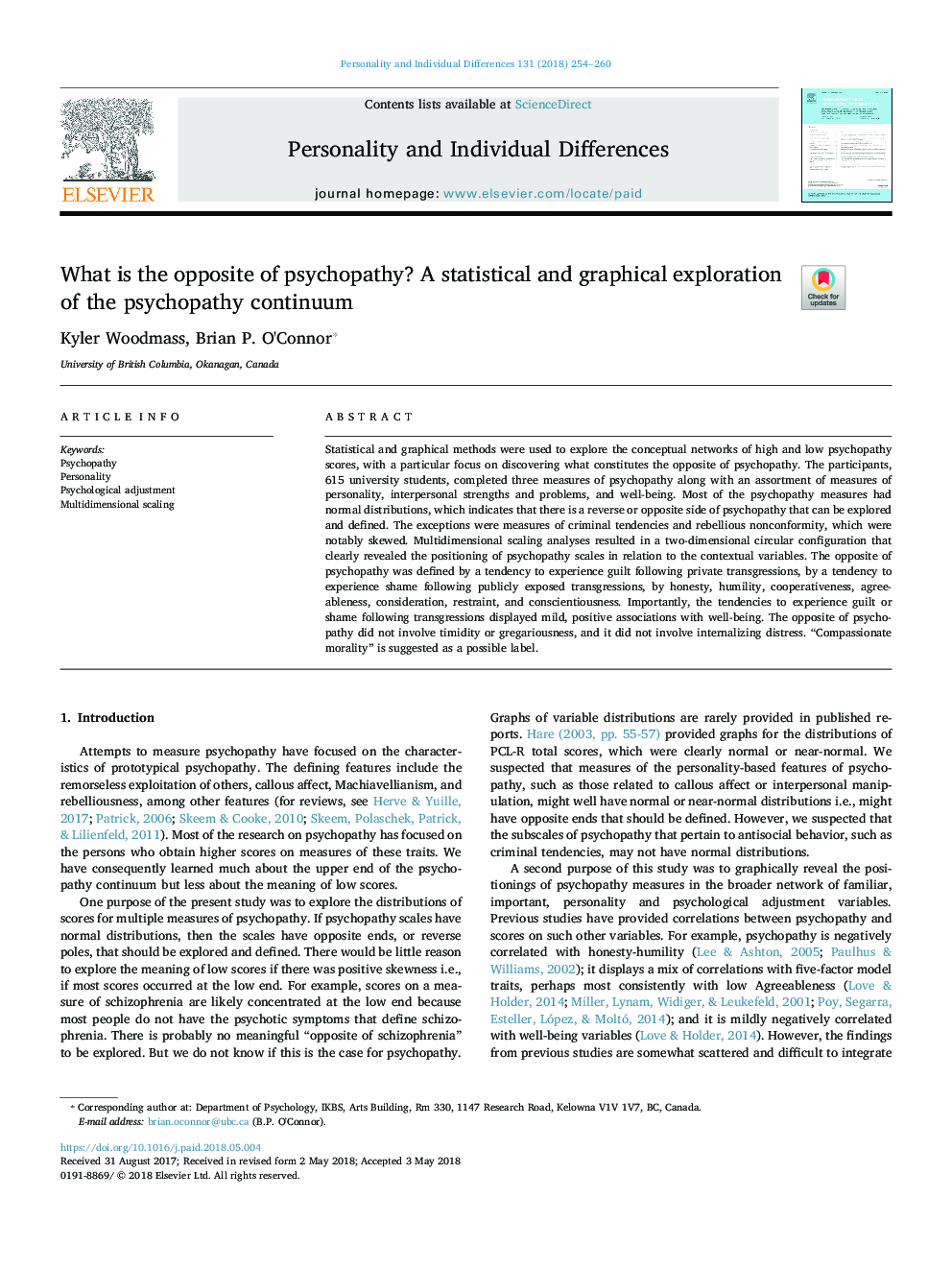| Article ID | Journal | Published Year | Pages | File Type |
|---|---|---|---|---|
| 7248608 | Personality and Individual Differences | 2018 | 7 Pages |
Abstract
Statistical and graphical methods were used to explore the conceptual networks of high and low psychopathy scores, with a particular focus on discovering what constitutes the opposite of psychopathy. The participants, 615 university students, completed three measures of psychopathy along with an assortment of measures of personality, interpersonal strengths and problems, and well-being. Most of the psychopathy measures had normal distributions, which indicates that there is a reverse or opposite side of psychopathy that can be explored and defined. The exceptions were measures of criminal tendencies and rebellious nonconformity, which were notably skewed. Multidimensional scaling analyses resulted in a two-dimensional circular configuration that clearly revealed the positioning of psychopathy scales in relation to the contextual variables. The opposite of psychopathy was defined by a tendency to experience guilt following private transgressions, by a tendency to experience shame following publicly exposed transgressions, by honesty, humility, cooperativeness, agreeableness, consideration, restraint, and conscientiousness. Importantly, the tendencies to experience guilt or shame following transgressions displayed mild, positive associations with well-being. The opposite of psychopathy did not involve timidity or gregariousness, and it did not involve internalizing distress. “Compassionate morality” is suggested as a possible label.
Related Topics
Life Sciences
Neuroscience
Behavioral Neuroscience
Authors
Kyler Woodmass, Brian P. O'Connor,
